
All Star Baseball 2003 is a baseball video game published by Acclaim Entertainment in 2002. The game features Derek Jeter on the cover.

Tetris Worlds is a version of the video game Tetris. Originally released in 2001 for Microsoft Windows and Game Boy Advance, it was later released for Xbox, GameCube, and PlayStation 2 in 2002. In 2003, an Xbox Live version titled "Tetris Worlds Online" and a single-disc compilation version were released for the Xbox. The latter was bundled with Xbox systems.

Smuggler's Run is a video game developed by Angel Studios and published by Rockstar Games as a launch title for the PlayStation 2 on October 26, 2000. In the game, the player plays as a smuggler who has a number of different vehicles at his disposal including dune buggies, rally cars, and military vehicles. The vehicles are used to smuggle assorted cargo through three different large, open levels. The game, which was an early release for the Sony PlayStation 2, features career and 1- to 2-player arcade modes.

BloodRayne is an action-adventure hack and slash video game developed by Terminal Reality and released on October 31, 2002. The game has since spawned a franchise with the addition of sequels, films, and self-contained comic books.
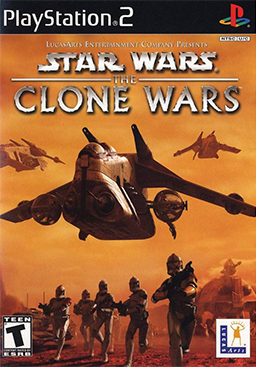
Star Wars: The Clone Wars is a video game set in the Star Wars universe developed by Pandemic Studios and published by LucasArts for GameCube, PlayStation 2 and Xbox. It consists mostly of vehicular combat using clone warships, starfighters, speeder bikes and tanks, as well as missions where players can control Anakin Skywalker, Obi-Wan Kenobi, or Mace Windu on foot. The game is set in the Star Wars prequel trilogy era, with the first level encompassing the Battle for Geonosis from Episode II: Attack of the Clones. The game also features multiplayer modes for up to four players in splitscreen, or online via Xbox Live for the Xbox. It holds aggregate scores of 73 out of 100, 72 out of 100 and 71 out of 100 on review aggregator Metacritic for the GameCube, PlayStation 2, and Xbox, respectively.

The Urbz: Sims in the City is a video game for the Game Boy Advance, GameCube, PlayStation 2, Xbox, and Nintendo DS. It is the third Sims game for video game consoles and is the second Sims game not to be released on Microsoft Windows, after a planned PC port and sequel were both cancelled due to mediocre sales. The next release for consoles and handhelds was the console port of The Sims 2.

NBA Street is a basketball video game developed by NuFX and EA Canada and published by Electronic Arts under the EA Sports BIG label. It was released for the PlayStation 2 on June 19, 2001, and on February 5, 2002, for the GameCube. The game combines the talent and big names of the NBA with the attitude and atmosphere of streetball.

18 Wheeler: American Pro Trucker, known in Japan as 18 Wheeler, is an arcade game developed by Sega AM2 and distributed by Sega. The game was released in arcades in 2000 and ported to the Dreamcast in 2001. It was released for the PlayStation 2 in 2001 and GameCube in 2002 by Acclaim Entertainment. Sega followed up on the success of 18 Wheeler with a sequel, The King of Route 66, which was released in the arcades in 2002 and ported to the PlayStation 2. This was one of the final arcade games to be ported to the Dreamcast after its discontinuation, before Sega became a third-party developer.

Madden NFL 2003 is an American football simulation video game based on the NFL that was developed by EA Tiburon and Budcat Creations and published by EA Sports. The 14th installment of the Madden NFL series, the game features former St. Louis Rams running back Marshall Faulk on the cover. This edition of Madden was the first to have EA Trax, the Mini Camp mode, and to feature Al Michaels as play-by-play announcer, who took over for Pat Summerall. Although it featured the expansion Houston Texans and the relocation of the Seattle Seahawks to the NFC, it was actually the second to do so. The game was released on August 12, 2002 for the Game Boy Advance, GameCube, Microsoft Windows, PlayStation, PlayStation 2 and Xbox. The PlayStation version also includes the Sega Genesis version of John Madden Football 93.
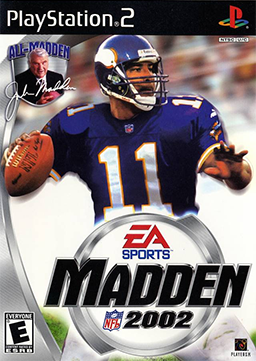
Madden NFL 2002 is an American football video game. It features former Minnesota Vikings quarterback Daunte Culpepper on the cover. Pat Summerall and John Madden are the commentators. The Madden NFL 2002 commercial first aired during Super Bowl XXXVI, three days after Madden NFL 2002 started selling in Japan. Notably, it does not feature the Super Bowl MVP Tom Brady, who is included on later editions of the game as a roster update. It is also the first game to be developed by Budcat Creations.
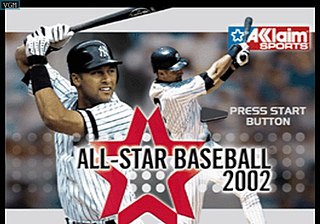
All-Star Baseball 2002 is a baseball sports game released for PlayStation 2 and GameCube in 2001.

WTA Tour Tennis, known in Japan as WTA Tour Tennis Pocket for Game Boy Advance, and WTA Tour Tennis Pro Evolution for GameCube and Xbox, and in Europe as Pro Tennis WTA Tour, is a tennis video game published and developed by Konami in 2001-2002.

NFL 2K3 is an American football video game released in 2002 for PlayStation 2, Xbox, and GameCube. It was developed by Visual Concepts and published by Sega. It is the only NFL 2K game for the GameCube. The cover athlete features Brian Urlacher of the Chicago Bears, becoming the first cover athlete in the NFL 2K series besides Randy Moss.
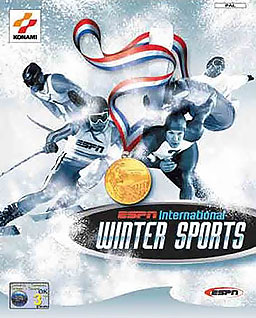
ESPN International Winter Sports 2002, known in Japan as Hyper Sports 2002 Winter, is the name of two sports video games released in 2002 by Konami, one for the PlayStation 2, Xbox, and GameCube, and the other for the Game Boy Advance. In Japan the game is part of the Hyper Sports series, known internationally as the Track & Field series.

Evolution Skateboarding is a sports video game released by Konami for the GameCube and PlayStation 2 in 2002. It includes several popular skateboarders such as Rick McCrank, Arto Saari, Kerry Getz, and Danny Way. There is also a create-a-skater feature and an unlockable character for every skater the player completes the game as. There are also sets of level specific songs such as a metal-remix of the Metal Gear Solid theme and a Castlevania theme after unlocking the Vampire Hunter. Levels are unlocked by beating a certain amount of objectives in a current level, such as collecting items like boots and other objects, performing tricks in certain areas of a level, and grinding a certain amount of meters. The Evolution Skateboarding engine was used in the bonus skateboarding mode included in the PlayStation 2 version of Metal Gear Solid 2: Substance in 2003.
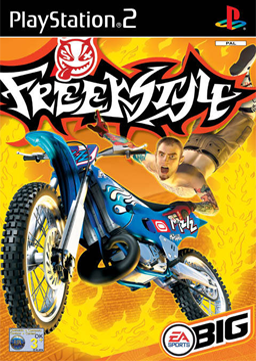
Freekstyle is a 2002 motocross racing video game for the PlayStation 2, GameCube and Game Boy Advance. There are four levels of gameplay: the circuit, a quick race, freestyle, and free run.
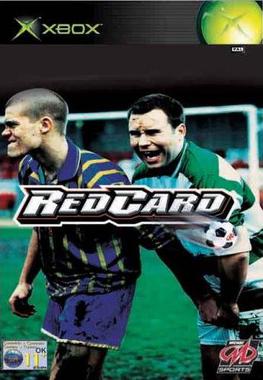
RedCard 2003, known as RedCard in Europe, is a video game based on association football, released in 2002 by Point of View. The game follows most of the rules of football, but allows for heavy tackles and special moves once the player has charged up a special meter.
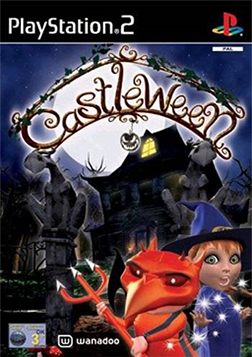
Castleween is the name of two 2002/2003 platform video games, one developed by Kalisto Entertainment for the PlayStation 2 and ported to the GameCube by Wanadoo Edition, and the other developed by Magic Pockets for the Game Boy Advance.

Top Gun: Combat Zones is a combat flight simulation game named after the 1986 film Top Gun. It was developed by British studio Digital Integration and published by Titus Interactive. It was originally released for the PlayStation 2 in 2001, followed by a GameCube version in 2002. Versions were also released for the Game Boy Advance and Microsoft Windows.
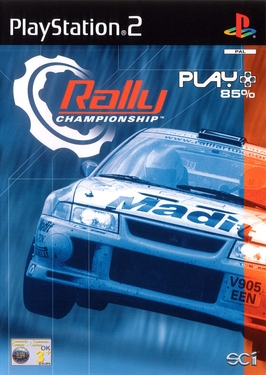
Rally Championship is a rally video game. It was released for PlayStation 2 in 2002 and GameCube in 2003. It is developed by Warthog Games and published by SCi. It is the last game in the Rally Championship series. The game is a sequel to the 2001 game Rally Championship Xtreme. It is the first game in the series not published by Europress and the first game not released on the PC.




















